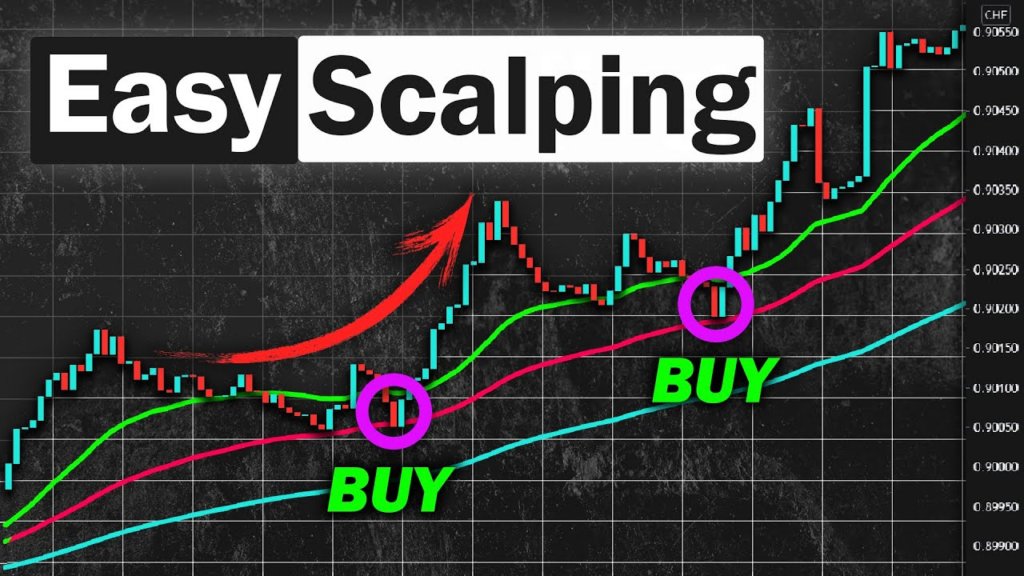
What is Scalping?
Scalping is a high-frequency trading strategy where traders aim to make small, quick profits by executing dozens or even hundreds of trades within a single day. Unlike day traders, who may hold a position for hours, scalpers hold trades for seconds to minutes.
Scalping relies on tight spreads, high liquidity, and rapid executions, making it ideal for highly liquid assets like forex, stocks, and cryptocurrencies.
This strategy focuses on small price changes, meaning traders need a high win rate and precise execution to be profitable.
How Scalping Works
- Trade Only Highly Liquid Assets
- Scalpers choose assets with tight bid-ask spreads and low slippage, ensuring quick entry and exit.
- Popular choices include major forex pairs (EUR/USD, USD/JPY), blue-chip stocks (AAPL, TSLA), and large-cap cryptos (BTC, ETH).
- Use Technical Analysis for Quick Decisions
- Scalpers rely on price action, support and resistance levels, moving averages, and momentum indicators to spot short-term opportunities.
- Key indicators include Bollinger Bands, MACD, RSI, and VWAP (Volume-Weighted Average Price).
- Execute Many Small Trades
- Scalpers take advantage of micro price movements, aiming for small profits (0.1% to 1%) per trade.
- They enter and exit positions within seconds or minutes, often using leverage to amplify gains.
- Strict Risk Management and Stop-Losses
- Since scalping requires frequent trades, losses must be kept minimal using tight stop-losses.
- Scalpers typically risk no more than 0.5% to 1% of their capital per trade.
Example of a Scalping Trade
A trader notices Bitcoin (BTC) is trading at $50,000, and price action shows a strong breakout above resistance.
- Entry: The trader buys BTC at $50,050 after the breakout.
- Stop-loss: Set at $49,950 (a tight $100 risk).
- Take-profit target: $50,150 (a $100 gain).
- Exit: BTC reaches $50,150 in less than 3 minutes, securing a $100 profit per BTC traded.
The trader repeats this process multiple times per day, accumulating small profits that add up over time.
Pros of Scalping
- Fast profit potential – Many small profits can compound into substantial gains.
- Minimal overnight risk – All trades are closed within minutes, eliminating exposure to overnight market moves.
- Works in any market condition – Scalping does not depend on long-term trends; it thrives on volatility.
- Can be automated – Many scalpers use trading bots to execute trades with high precision.
Cons of Scalping
- High transaction costs – More trades mean higher commissions and spreads, reducing net profits.
- Extremely time-intensive – Scalping requires constant screen time and rapid decision-making.
- Psychological stress – Fast trading can lead to fatigue, emotional trading, and burnout.
- Not suitable for all brokers – Some brokers prohibit scalping or impose restrictions on ultra-fast trading.
When Should You Use Scalping?
- If you enjoy fast-paced trading and can make quick decisions under pressure.
- If you have a reliable trading platform with low fees and fast execution speeds.
- If you understand technical analysis and market microstructure.
- If you have the time and focus to monitor charts for extended periods.
Final Thoughts: Is Scalping Right for You?
Scalping is one of the most demanding yet potentially highly profitable trading strategies. It requires sharp technical skills, discipline, and high-speed execution.
While scalping can generate consistent small profits, it is not suitable for everyone due to its high stress, intense focus, and rapid pace.
If you enjoy fast decision-making and high-frequency trading, scalping could be a great fit. However, for those looking for a more relaxed trading approach, swing or position trading may be better options.


